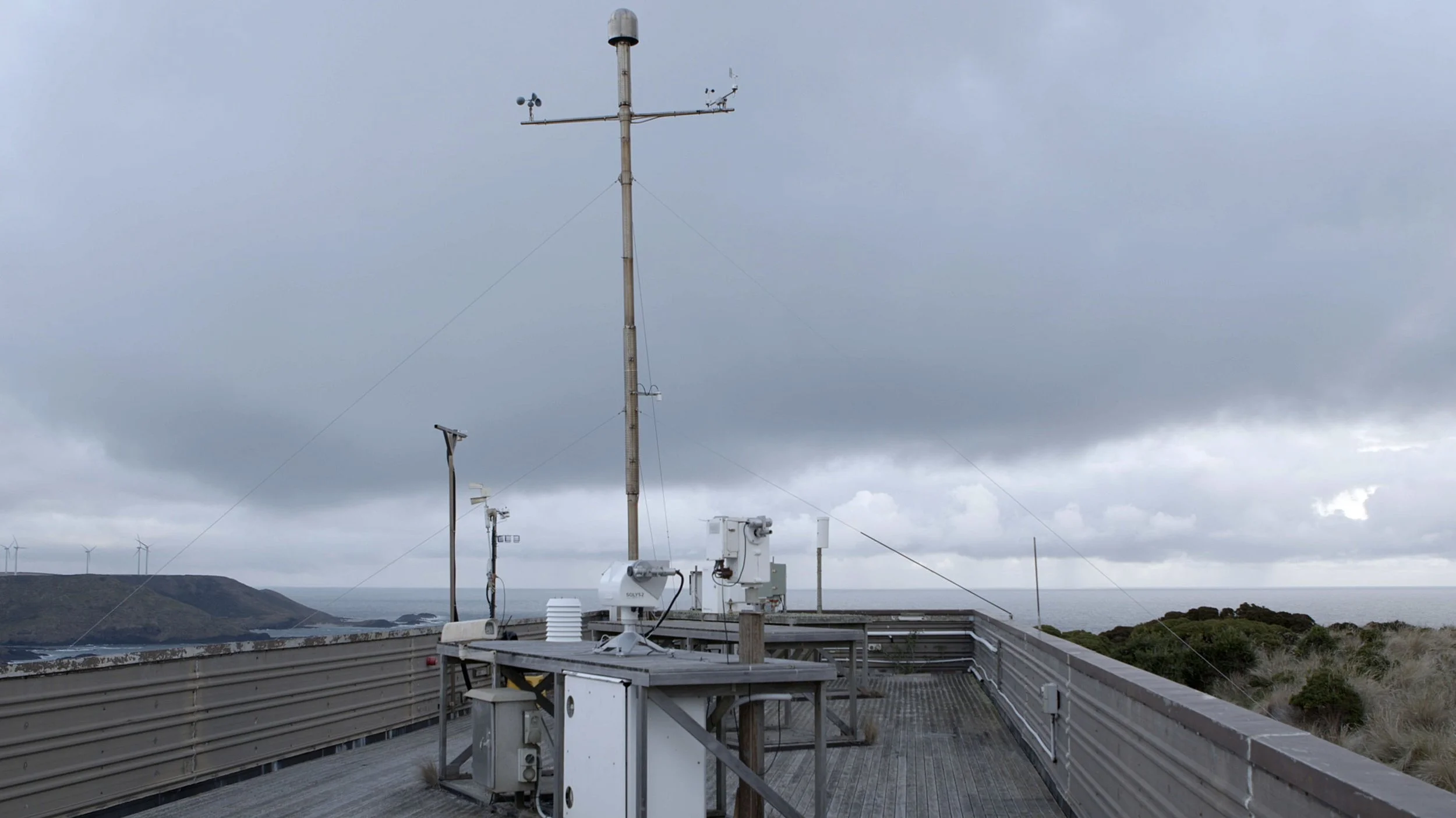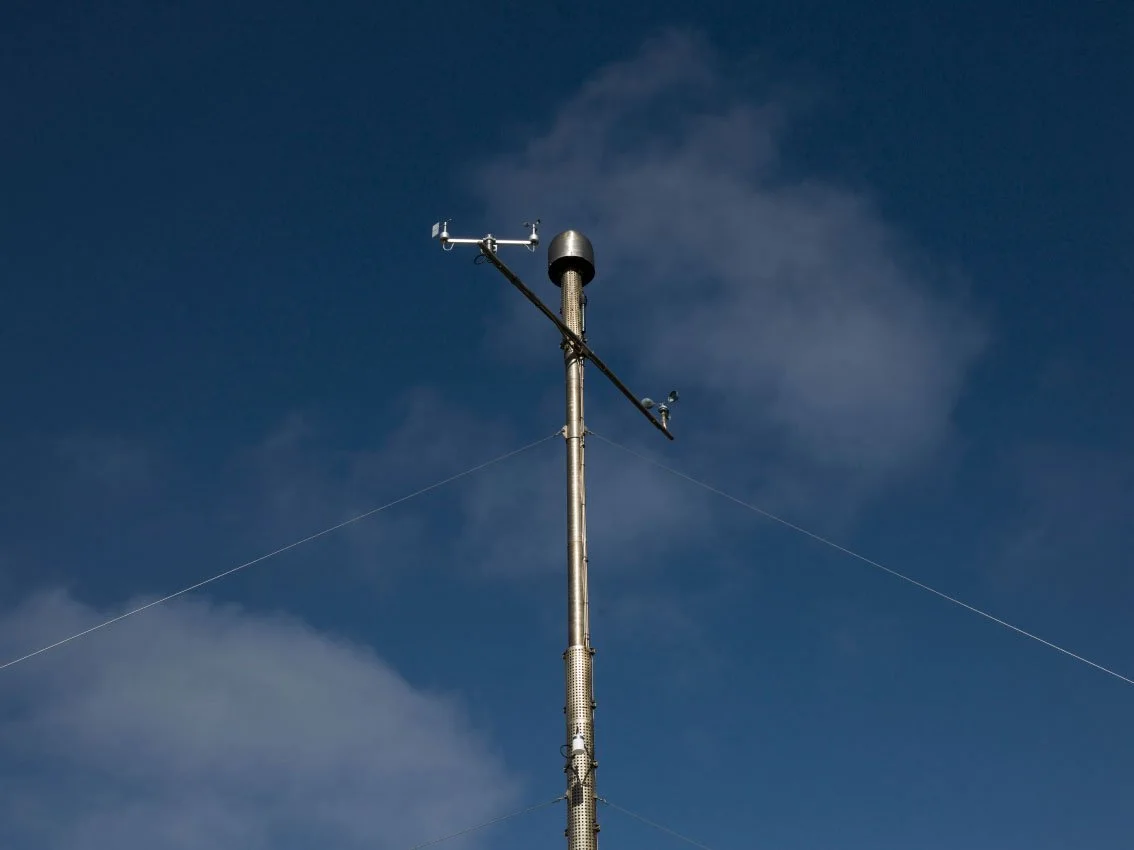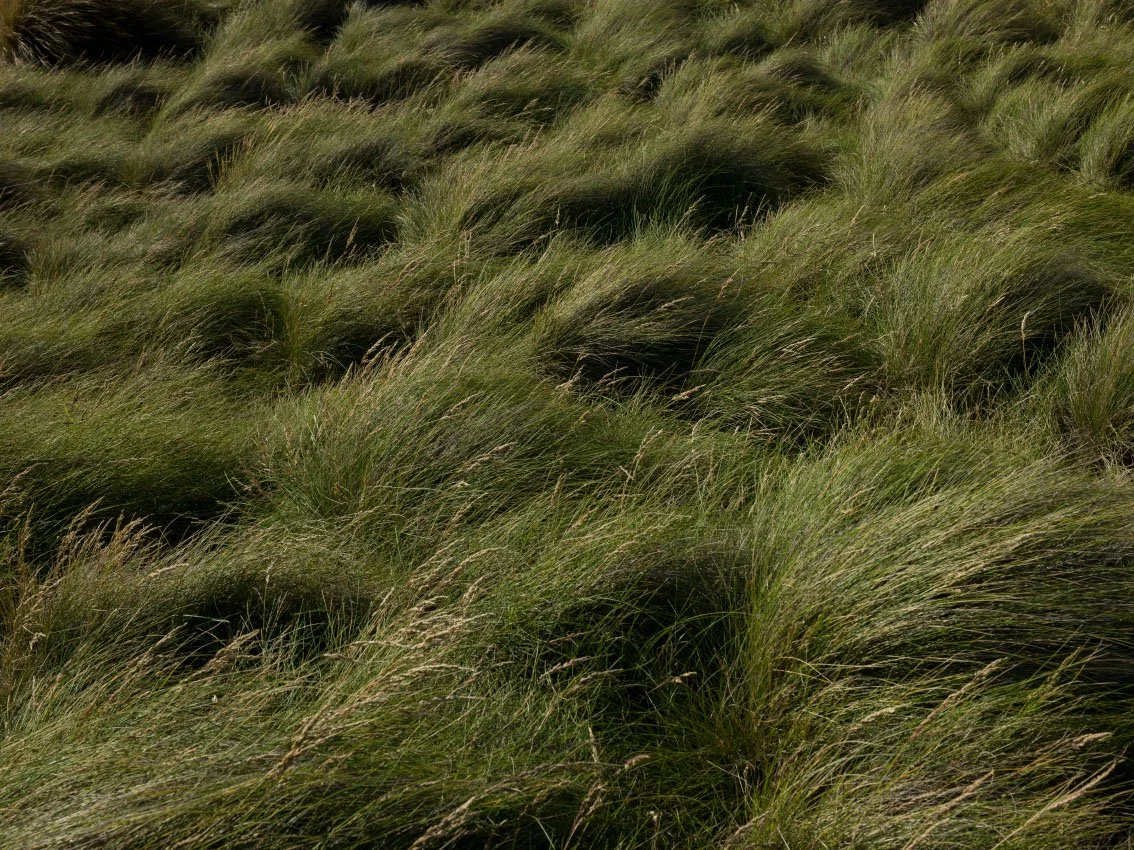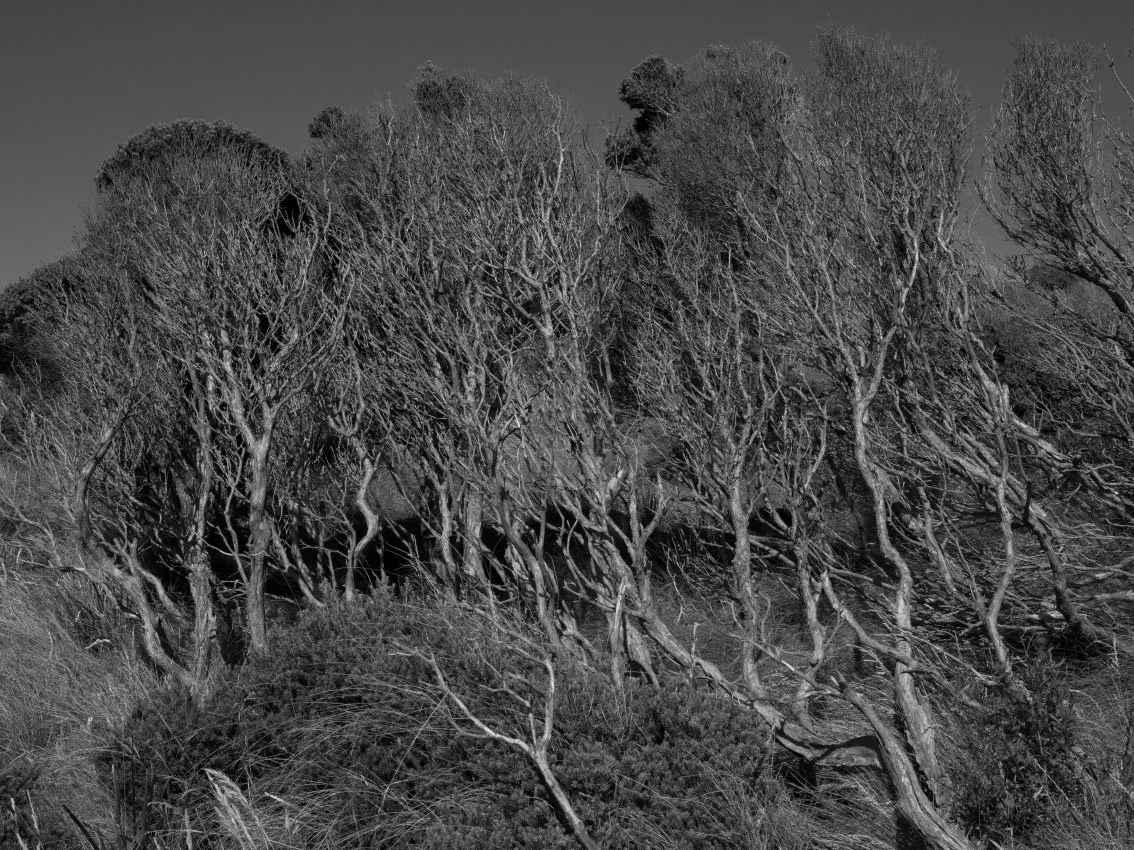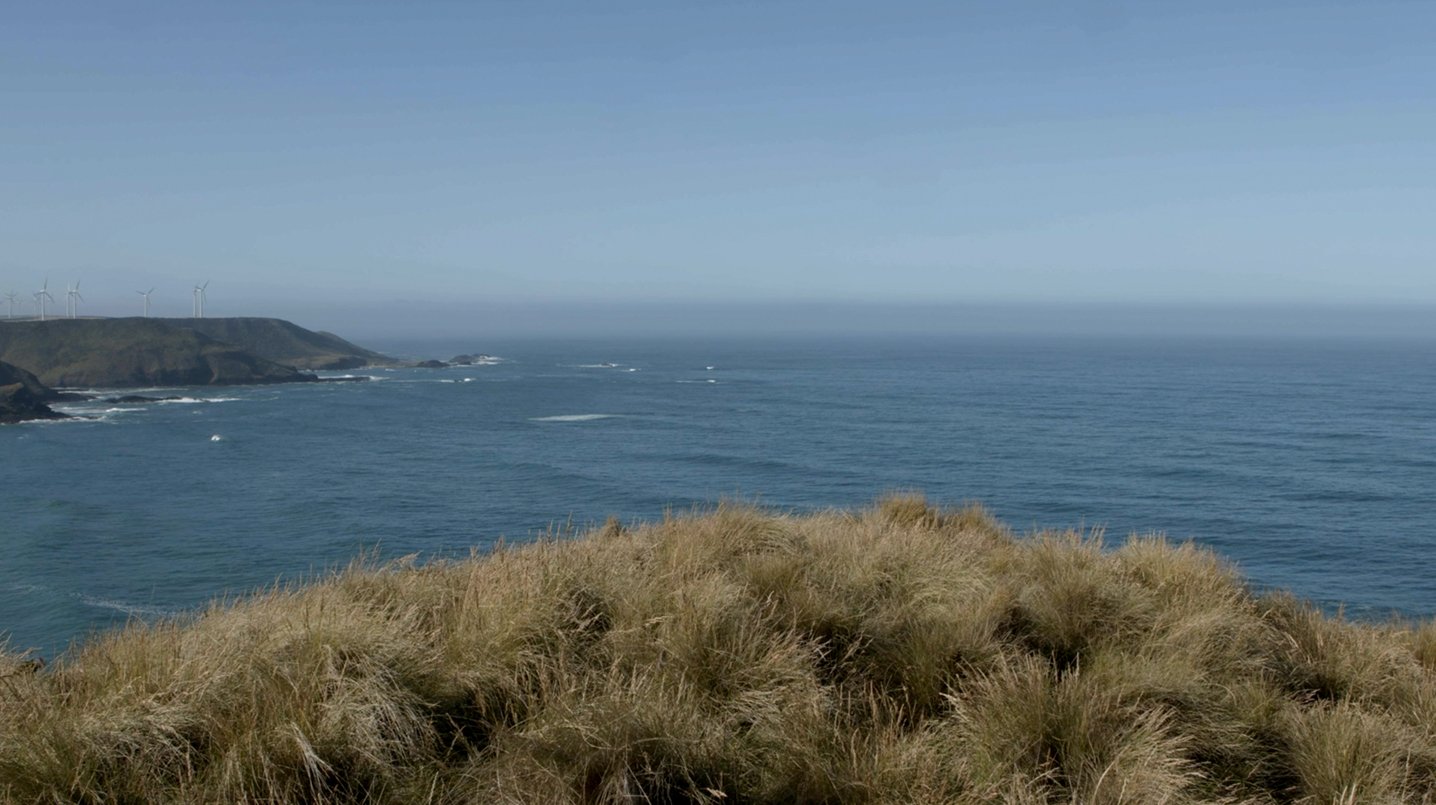
The Smallest Measure
An artistic research project exploring the collision of slow and fast climate emergencies through work done at the Kennaook-Cape Grim Air Pollution Monitoring Station in north-west lutruwita/Tasmania, Australia.
Kennaook/Cape Grim, Air Pollution Monitoring Station, lutruwita/Tasmania. (Video still), 2022.
The air we breathe: observing atmospheric change through art and science.
Published in The Conversation, 17 October, 2022.
Overlooking the Bass Strait on the remote and windy north-west tip of lutruwita/Tasmania, is the Kennaook/Cape Grim Baseline Air Pollution Station. Said to be some of the cleanest in the world, the air that arrives at Kennaook has travelled thousands of kilometres and hasn’t touched land for many days, weeks or even months. The powerful westerly winds—the ‘roaring-forties’—carry air-masses across the Southern Ocean, reaching land well-mixed and uncontaminated by recent human activity. Considered ‘baseline’, this air is representative of true background atmospheric conditions and grants us insight into the driving forces behind human-driven climate change.
When I arrived at Kennaook in mid-April of this year, it was late afternoon and a storm was brewing. The wind was blowing from the south-west at a steady 54km/hr—baseline conditions—and the CO2 levels were at 413.5 ppm (parts per million); a level scientists warned, more than forty years ago, would create catastrophic and irreversible environmental damage and species collapse. I climbed the stairs to the top deck, set up my camera and tripod and started filming.
I had heard about the Kennaook/Cape Grim air monitoring station and science program while researching for an art-science project in 2019 and was immediately intrigued. Much of my work has been about the ongoing human and environmental harm caused by uranium mining and atomic testing programs, and the invisibility of both the harm and the substances has continued to challenge me creatively: how do you make visible the invisible? How do you communicate change that is imperceptible? To discover that there is a place that captures, archives and measures the air and these imperceptible changes presented me with an opportunity to do just that. I have since based my creative-practice PhD on the work done at Kennaook/Cape Grim and have been working alongside the scientists from the Bureau of Meteorology (BoM) and the Commonwealth Scientific and Industrial Research Organisation (CSIRO), who jointly manage the program.
For this project, titled The Smallest Measure, I have taken an intentionally slow, observational approach, using ‘slow cinema’ techniques to respond to the slow science carried out on site and to the ‘slow violence’ of climate change. Slow cinema, says writer Matthew Flanagan, “compels us to retreat from a culture of speed, […] and physically attune to a more deliberate rhythm.” Slow violence is described by Humanities and Environment Professor Rob Nixon as “a violence that occurs gradually and out of sight … an attritional violence that is typically not viewed as violence at all.” This kind of violence is so embedded within daily life, connected to commonplace activities and daily rituals that we don’t see it at all, let alone regard it as an emergency. I use slow aesthetic techniques to allow myself and the viewer to use our own capacities to observe and pay attention to the damage within the everyday.
On the top deck of the station as I watch the storm roll across the ocean, I wonder where the air has come from, who else has breathed it, what is inside of it and how long it has been on its journey. While at Kennaook, I film and record the landscape and science working together, in constant conversation. Inside the station, the scientists and technicians are at work. A day is spent cleaning one of the instruments, tubes are flushed and re-flushed, tests are run. All the while the air is flowing in from the outside through pipes and into different machines, registering numbers and building graphs, telling us what gases are contained within it and which direction it may have come from. If there is a sudden spike, it’s come from a car outside the station, if it’s a more consistent patch of dirty contaminants, the air is probably coming from the north, from Melbourne. Meanwhile, outside the station, the landscape is working too. The ocean currents ebb and flow, the waves crash onto the rocks below, the wind keeps on blowing, making patterns across the grass, sometimes with such force that it is destabilising.
My work doesn’t show dramatic scenes or spectacularly catastrophic events, instead it shows—through slow visual, aural and scientific processes of attention and observation—that the emergency is already here, that we are entangled within it, and—if we really want to—we have the capacity to respond.
The Smallest Measure (Southern Ocean), Kennaook/Cape Grim, lutruwita/Tasmania, 2021
The Smallest Measure (75-meter air inlet), Kennaook/Cape Grim, lutrwita/Tasmania, 2021
The Smallest Measure (Poa labillardierei), Kennaook/Cape Grim, lutruwita/Tasmania, 2021
The Smallest Measure (Melaleuca ericifolia, Kennaook/Cape Grim, lutrwita/Tasmania, 2021
The Smallest Measure, 2021. Single-channel version, 23 mins. Headphones recommended.
Exhibitions + Installations 2021
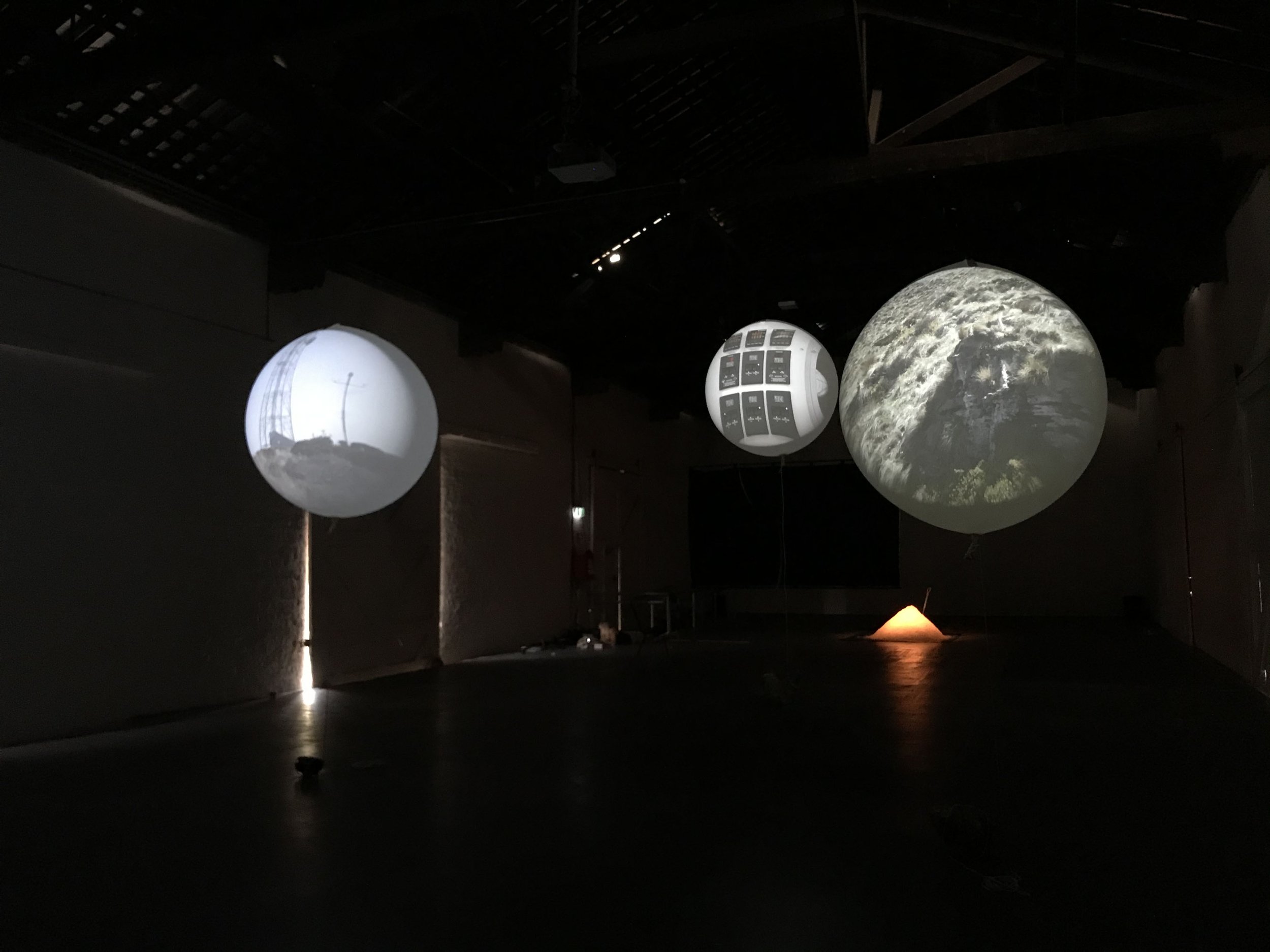
The Smallest Measure at the Castlemaine State Festival, 2021
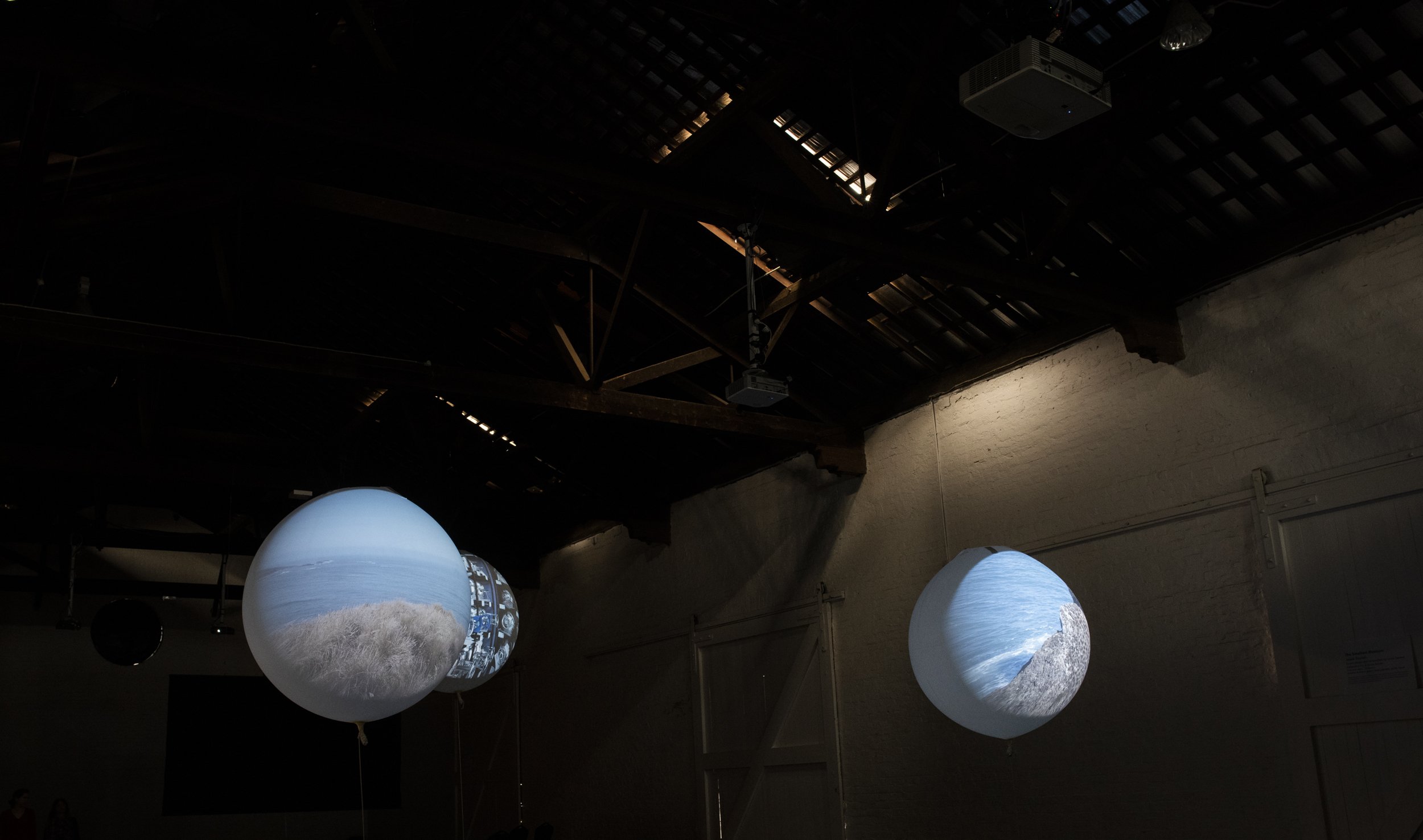
The Smallest Measure at the Castlemaine State Festival, 2021. Photo by Julie Millowick.

The Smallest Measure at the Counihan Gallery, 2021. Photo by Kristian Haggblom.
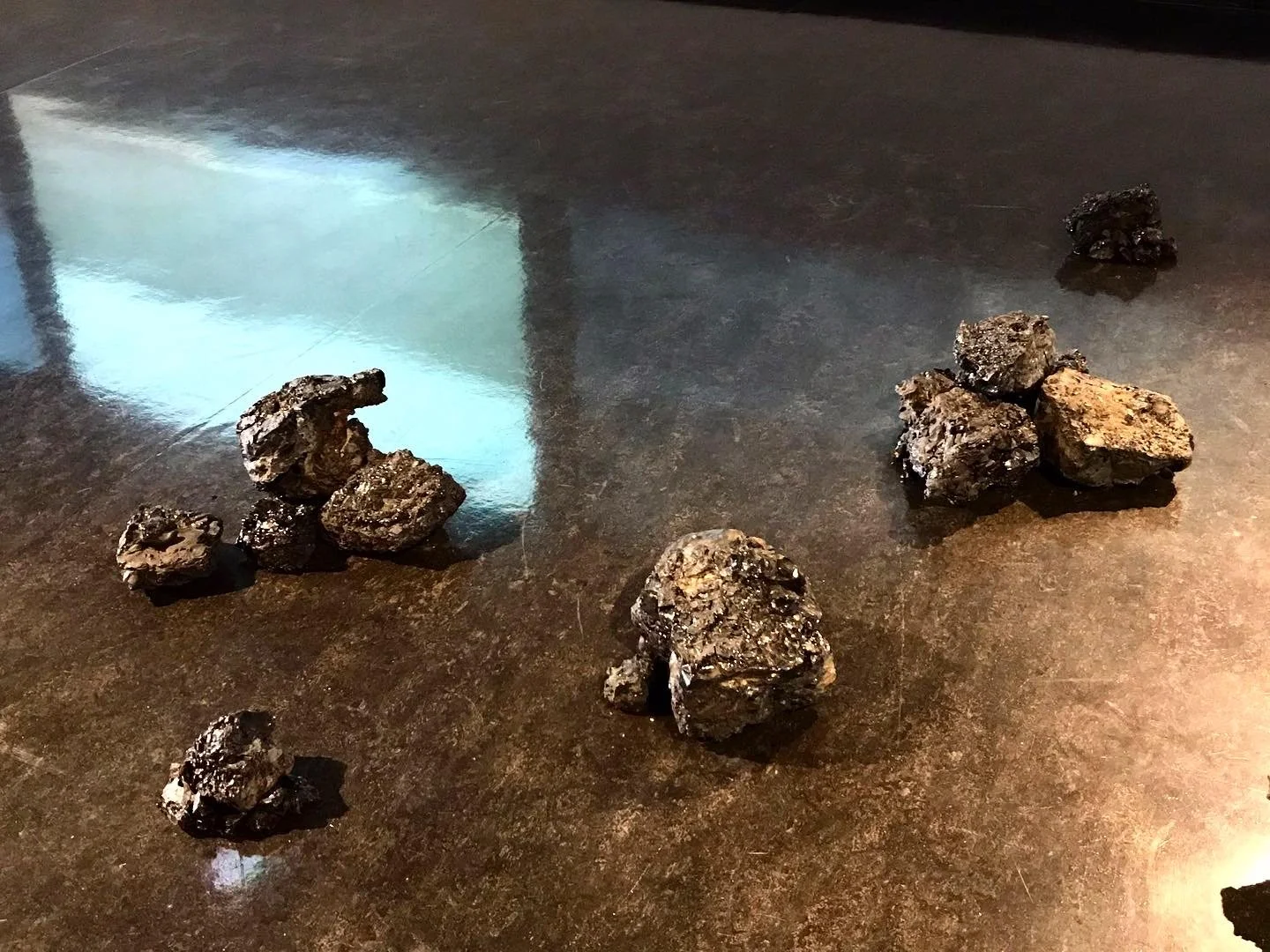
The Smallest Measure at the Counihan Gallery, 2021. Photo by Kristian Haggblom

The Smallest Measure at the Counihan Gallery, 2021.
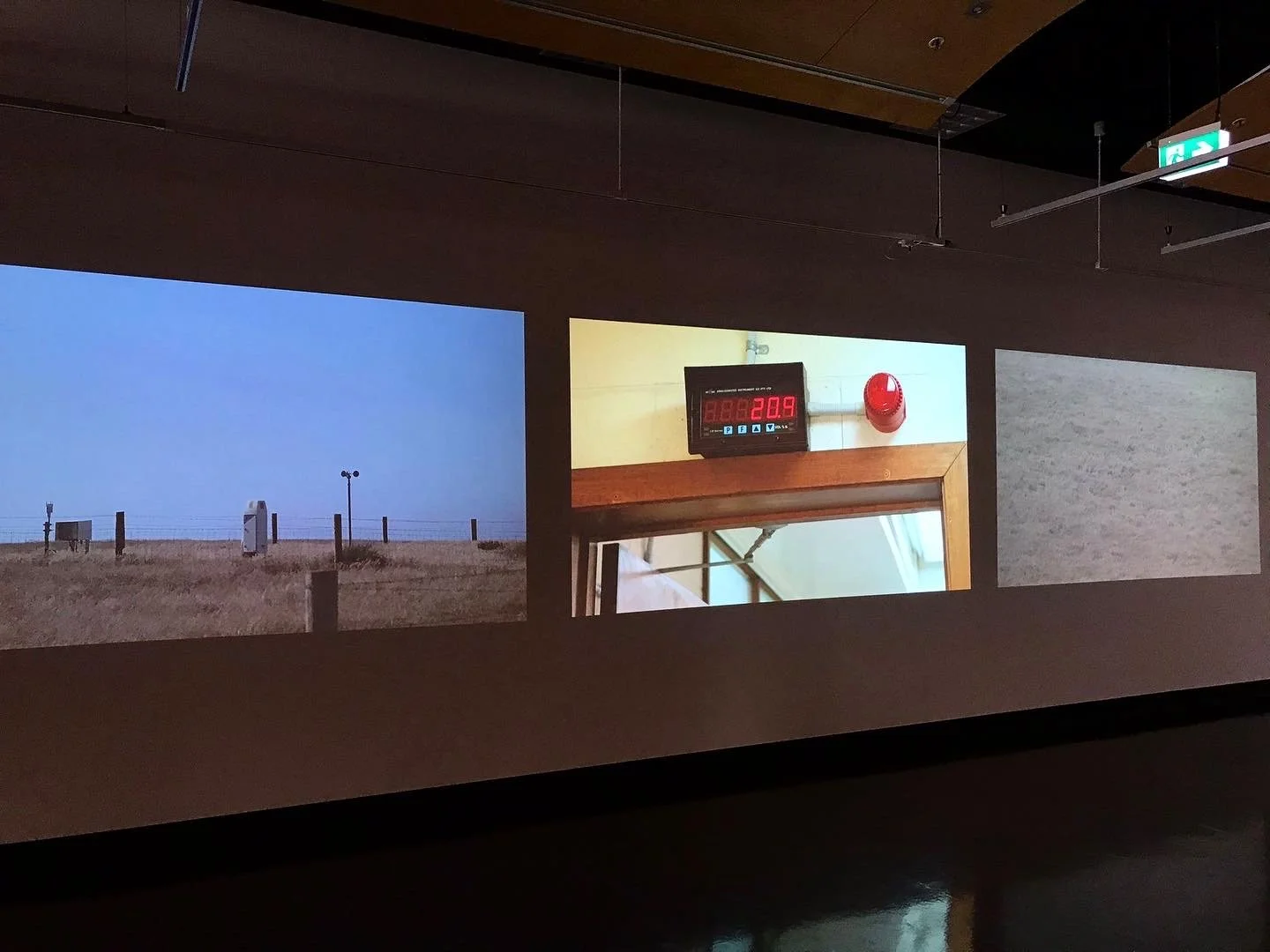
The Smallest Measure at the Counihan Gallery, 2021. Photo by Kristian Haggblom
Sound design and composition by Linda Dement, Genevieve Fry & Jessie Boylan
Slag collection and arrangement undertaken in conversation with Adam John Cullen
Materials: Slag (molten mining waste from the BHP Mine, Broken, Hill, NSW), Weather Balloons, Air Canister, Tiger Snake, Cape Grim, 1982, Courtesy CSIRO, Aspendale, Victoria, Air Canister, 2019, Courtesy CSIRO, Aspendale, Victoria.
This work was made on the lands and waterways of the Peerapper and Paraloihener people of North-West lutruwita/Tasmania and the Woi Wurrung and Boon Wurrung peoples of the Kulin Nation, in South-Eastern Victoria.
The Smallest Measure is supported by the Australia Council for the Arts (Resilience Fund), Regional Arts Victoria, RMIT University School of Art and La Trobe University through the Care Project.
Additional sonobuoy recordings of leopard seals and Antarctic blue whales used in this work were recorded and curated by Brian Miller, Australian Antarctic Division.
